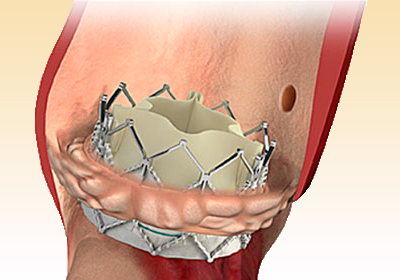Bicuspid aortic valve malformation is the most frequent cardiac malformation (about 1%), and a significant percentage of these cases generate severe aortic stenosis.

As we know, transcatheter aortic valve replacement (TAVR) has been developed for tricuspid valves, which are studied in the most important randomized trials for high-, medium-, and low-risk patients.
While current information shows that TAVR yields good results for the bicuspid aortic valve in high- or intermediate-risk patients, we still do not have much information regarding low-risk patients.
Researchers conducted an analysis of the PARTNER 3 study, more precisely of the patients who had been included in the bicuspid valve registry, and these were compared with the patients enrolled in the study for tricuspid aortic valve.
The primary endpoint was a composite of all-cause mortality, stroke, and cardiovascular readmission (valve-related, procedure-related, and heart-failure related).
Read also: Is Cusp Overlapping Projection the New Self-Expandable Valve Implantation Technique?
The analysis included 169 patients with bicuspid aortic valve (BAV) disease, and 496 with tricuspid aortic valve (TAV) disease.
Patients with BAV disease were younger, and most of them were women. The majority had Sievers type 1 morphology. In addition, they had a lower risk score, fewer risk factors, and larger annulus size. For this reason, propensity score matching was conducted to normalize the populations and 148 patients remained in each group. Annulus size was larger in BAV patients.
At 30 days, there was no difference between BAV vs. TAV disease in terms of mortality (0% vs. 0%), stroke (1.4% vs. 1.4%), readmission (5.4% vs. 4.7%), or the composite of events. Similarly, rates were similar for permanent pacemaker implantation (6.1% vs. 6.8%). The hemodynamic profile in the Doppler echocardiography was similar, and the rate for moderate or severe leaks was very low in both groups.
Read also: Zwolle Score: Can a Risk Score Decide Where STEACS Patients Should Stay?
After a year of follow-up, similar results were observed regarding the secondary endpoint (10.9% vs. 10.9%), mortality (0.7% vs. 1.4%), stroke 2.1% vs. 2%), and readmission (9.6% vs. 9.5%). Functional class and quality of life were also similar between groups.
Conclusion
Among highly selected patients with low surgical risk bicuspid aortic valve disease without significant raphe or subannular calcification, TAVR using SAPIEN 3 had outcomes similar to those of a propensity-matched cohort of patients with tricuspid aortic stenosis.

Dr. Carlos Fava.
Member of the Editorial Board of SOLACI.org
Original Title: The PARTNER 3 Bicuspid Registry for Transcatheter Aortic Valve Replacement in Low-Surgical-Risk Patients.
Reference: Mathew R. Williams, et al J Am Coll Cardiol Intv 2022;15:523–532.
Subscribe to our weekly newsletter
Get the latest scientific articles on interventional cardiology





